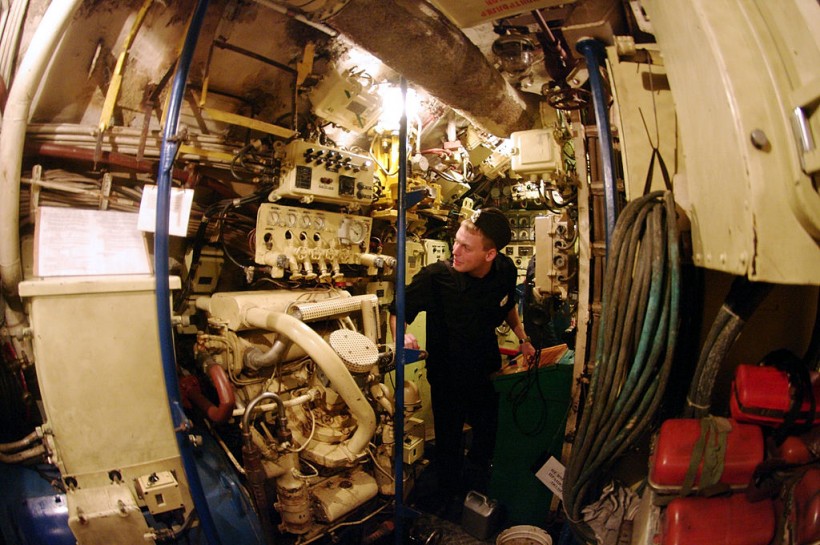Radiation readings at the Zaporizhzhia nuclear power facility in northeastern Ukraine have remained unchanged.
The factory was apparently under fire from all sides by the Russian troops.
International Atomic Energy Agency, the fire at the facility has not impacted "critical" equipment, and plant workers are dealing with the problem.
According to Reuters, US Energy Secretary Jennifer Granholm also clarified that there was no sign of higher radiation levels at the facility.
#Ukraine regulator tells IAEA there has been no change reported in #radiation levels at the #Zaporizhzhia Nuclear Power Plant site.
— IAEA - International Atomic Energy Agency ⚛️ (@iaeaorg) March 4, 2022
Zaporizhzhia Nuclear Power Station Seized: What You Need to Know
The Zaporizhzhia nuclear power station, which was built between 1984 and 1995, is Europe's and the world's biggest nuclear power plant. Reports said the facility features six reactors, each generating 950 megawatts, for a total output of 5,700 megawatts, enough to power about four million households.
It generates one-fifth of Ukraine's electricity and nearly half of the energy generated by its nuclear power plants in normal times.

A Ukrainian officer stands in a Zaporizhzhia (U-01), "Foxtrot" NATO class submarine during repair works at the Russian military dock in the Ukrainian city of Sevastopol, the main base of the Russian Black Sea navy, on November 24, 2010. The submarine was launched in 1970 and is the only submarine in the Ukrainian Navy at the moment.
The facility is located near Enerhodar, Ukraine, on the Dnieper River's Kakhovka reservoir banks. It's around 200 kilometers south of Kyiv and 550 kilometers south of the contentious Donbas area.
According to CNN, Russian forces have taken Ukraine's largest nuclear power facility. A fire that threatened disaster was doused in the early hours of Friday morning, citing Ukraine's nuclear regulator.
The State Nuclear Regulatory Inspectorate of Ukraine stated in a statement released Friday morning local time that the Zaporizhzhia nuclear power station in southern Ukraine had been captured by Russian armed forces, but they were in communication with plant management.
❗️Important information from Zaporizhzhia NPP:
— NEXTA (@nexta_tv) March 4, 2022
📍At the moment, the third power unit was shut down at the plant and only the fourth unit is working;
📍The radiation and fire safety conditions at the nuclear power plant are within normal limits. pic.twitter.com/qspIFz8O7x
According to the agency, all power units were intact, and "critical to safety" systems were working.
Energoatom, Ukraine's nuclear power operator, stated there were "dead and injured among the Ukrainian defenders of the site" in a separate statement.
Following bombardment by Russian armed troops, Ukraine's State Emergency Services (SES) stated that several dozen firemen had doused a fire that had developed in a training building outside the main reactor complex.
World leaders and the International Atomic Energy Agency (IAEA) expressed worry over the incident, and the IAEA urged for an end to fighting around the site.
However, the IAEA noted background radiation levels were normal, and the fire had not impacted "critical" equipment.
#Ukraine tells IAEA that fire at site of #Zaporizhzhia Nuclear Power Plant has not affected “essential” equipment, plant personnel taking mitigatory actions.
— IAEA - International Atomic Energy Agency ⚛️ (@iaeaorg) March 4, 2022
Fire Out In Facility
The regional military administration said that the fire at the Zaporizhzhia facility in Enerhodar had been put out.
Damage to the compartment of reactor No. 1 had occurred, but the power unit's safety had not been compromised.
Andriy Tuz, a spokesperson for the nuclear station, told Ukrainian television (via WESH and Associated Press) that shells were dropping straight on the facility, causing one of its six reactors to catch fire. That reactor is now undergoing renovations and is not operational, but he claims nuclear fuel is within.
The strike reawakened worries that the invasion might destroy one of Ukraine's 15 nuclear reactors, triggering a repeat of the 1986 Chernobyl tragedy, the world's worst nuclear disaster, which occurred 65 miles north of the city.
RELATED ARTICLE: What Happens if Russia Bombs Ukraine's Chernobyl Nuclear Power Plant? Experts Explain Radioactive Risks
Check out more news and information on Medicine and Health in Science Times.



![Earth's Quasi-Moon Kamo‘oalewa Could Originate From Lunar Surface Not Asteroid Belt [Study]](https://1721181113.rsc.cdn77.org/data/thumbs/full/53275/89/56/50/40/earths-quasi-moon-kamo-oalewa-could-originate-from-lunar-surface-not-asteroid-belt-study.png)










